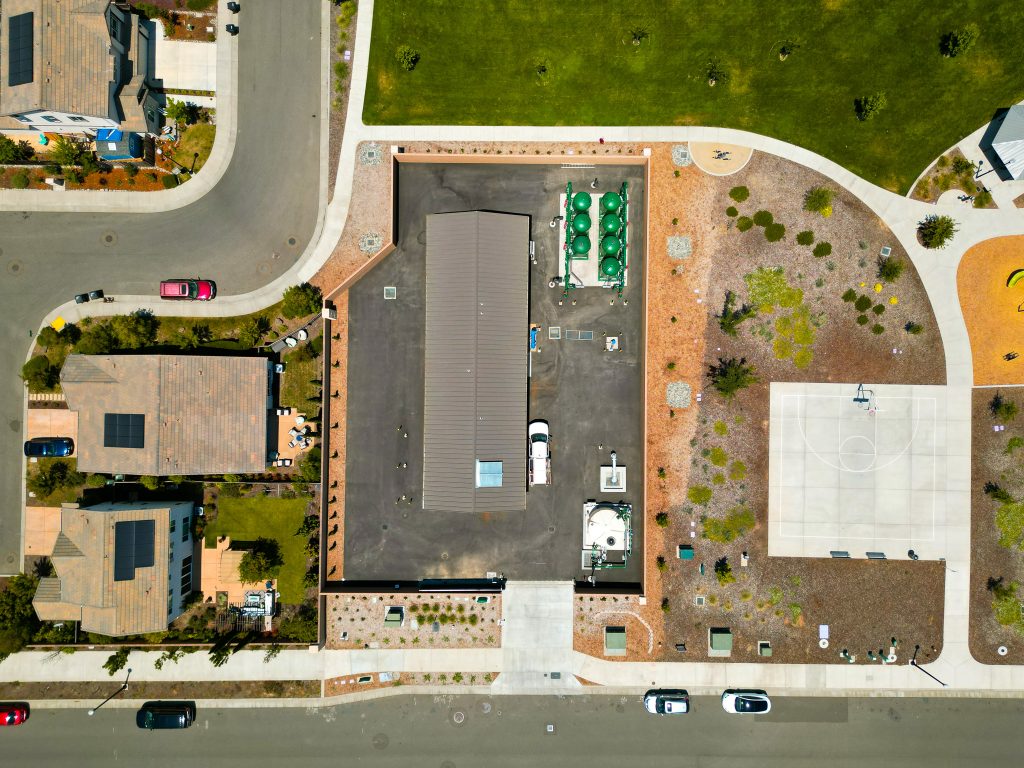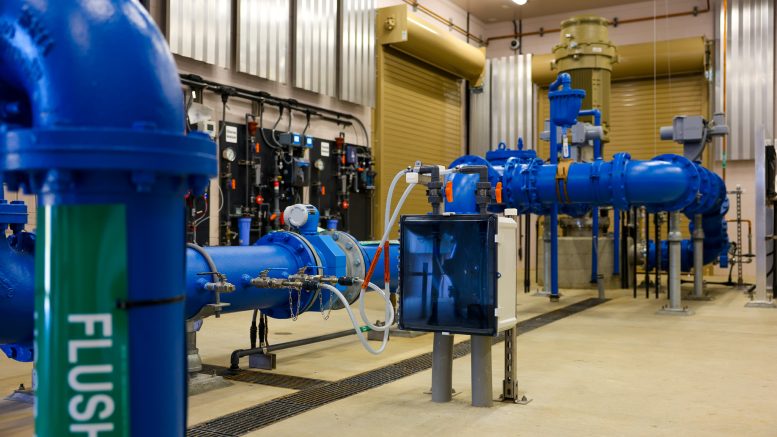If Northern California has another wet winter, Roseville is ready to save some of that rain for later.
The City of Roseville recently dedicated two new Aquifer and Storage and Recovery (ASR) wells. These specialized wells allow the City to not only pump water up for use, but to recharge its groundwater basin. It’s like putting water in the bank.
And that basin is huge—double the size of Folsom Reservoir. Roseville and its water partners now have access to 1.8 million acre feet of potential groundwater storage space. At full capacity, Folsom Reservoir holds about 975,000 acre feet. Each acre foot can supply three typical homes for a year.
“It’s a big achievement,” says Sean Bigley, Roseville’s Assistant Environmental Utilities Director. “It’s a small footprint with huge water storage potential.”

Named Solaire and Westbrook, the new ASR wells and pump stations took more than two years to construct. Solaire is located on Solaire Drive south of Pleasant Grove Boulevard next to Sullivan Park in West Roseville. Westbrook is located near Westbrook Boulevard close to the Pleasant Grove Wastewater Treatment Plant.
Sleek and modern, the pump houses blend in with their neighborhoods. Landscaping softens the edges of their brick walls. Panels inside the buildings absorb and soften any noise.
For the grand opening ceremony Dec. 4 at the Solaire pump house, City dignitaries were on hand including Roseville Mayor Bruce Houdesheldt and Councilman Scott Alvord, as well as Assemblyman Joe Patterson. Derrick Whitehead, Roseville’s former Director of Environmental Utilities, also took part in the dedication.
“Derrick Whitehead is the visionary behind our ASR program,” Bigley says. “He’s why we have the program we have now.”
Together, the officials turned a blue water wheel twice, symbolically activating the wells.
“We can store TWO Folsom Lakes below us!” Alvord posted on Facebook. “During the winter and times of water abundance, we treat water, then inject it deep in our aquifer for storage. Then during the hot summers or drought times, we can recover this water and mix it with surface water to help our water supply be more resilient when we need it.”
Groundwater supplies about a third of the Sacramento region’s water needs. An important resource for Roseville and other local cities, it provides water supply reliability in times of drought or abundance.
Percolating naturally from the surface or injected via wells, groundwater accumulates in unconsolidated material (gravel, sand, silt, etc.) known as aquifers. Groundwater fills the pores—the little air spaces— around soil particles contained in the aquifers in each basin, which acts like a giant sponge. The water stays there forever until pumped out via wells.
Two more ASR wells are now under construction in Central Roseville: Campus Oaks and Misty Wood. Each well is named for its neighborhood.
“Judging by pump testing, these next two will probably be our best producing wells,” Bigley says. “Their hydrogeology is perfect.”
Roseville isn’t stopping there. Adds Bigley, “We have two other sites already determined. By 2027, we’ll have 11 wells.”
Each well has a pipe extending 400 to 500 feet down into the aquifer beneath the city. The wells cost about $9 million apiece. State funding has helped Roseville pay for a portion of the environmentally friendly projects.
For the two wells now under construction, Roseville received $8 million from the Regional Water Authority, the umbrella organization over the greater Sacramento area’s water providers. That allocation was part of $55 million that the RWA received from the California Natural Resources Agency.
“The state sees ASR wells as beneficial projects,” Bigley says. “There was one condition: that the projects benefit the health of the lower American River. These wells have a water supply reliability benefit, but they also provide environmental benefits. We can provide water at the right time.”
Using groundwater in drier conditions instead of surface water can help maintain the cold water pool in Folsom Reservoir and can be strategically released into the American River and maintain a more ideal water temperature —crucial while salmon spawn.
“These wells, operated at the right time in the right conditions, can provide a temperature benefit to the American River,” Bigley explains, “and that helps the salmon who call the river home.”



























